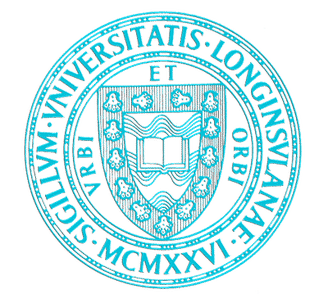预约演示
更新于:2025-08-11
Pterostilbene
紫檀芪
更新于:2025-08-11
概要
基本信息
原研机构- |
非在研机构- |
权益机构- |
最高研发阶段临床2期 |
首次获批日期- |
最高研发阶段(中国)临床前 |
特殊审评- |
登录后查看时间轴
结构/序列
分子式C16H16O3 |
InChIKeyVLEUZFDZJKSGMX-ONEGZZNKSA-N |
CAS号537-42-8 |
关联
7
项与 紫檀芪 相关的临床试验JPRN-jRCTs031220638
A randomized, double-blind, controlled study of pterostilbene in aging infertile patients to improve the quality of oocytes.
开始日期2023-02-14 |
申办/合作机构- |
CTRI/2022/07/044061
Open label, randomised, one period one sequence, single dose, pharmacokinetic study to evaluate the bioavailability of Resveratrol and Pterostilbene after administration of single dose of NOVAGENERE-XAR and NOVAGENERE-XAP capsules in six healthy, adult, male human subjects under fasting conditions
开始日期2022-07-15 |
申办/合作机构 |
JPRN-jRCTs031210153
A randomized, double-blind, controlled study of pterostilbene in aging infertile patients
开始日期2021-06-16 |
申办/合作机构- |
100 项与 紫檀芪 相关的临床结果
登录后查看更多信息
100 项与 紫檀芪 相关的转化医学
登录后查看更多信息
100 项与 紫檀芪 相关的专利(医药)
登录后查看更多信息
1,533
项与 紫檀芪 相关的文献(医药)2026-01-01·TALANTA
AIEgen-based metal-organic gels for rapid and ultrasensitive discrimination of piceatannol from core-isostructural analogues
Article
作者: Li, Qi ; Huang, Shufei ; Huang, Weihua ; Xu, Huifeng ; Hu, Xiao ; Chen, Ronglin ; Li, Xihai ; Yu, Lishuang ; Pan, Rui ; Zhu, Xi ; Wang, Lili
A highly stable and strongly fluorescent metal-organic gel, Zr-TCBPE-MOG, was successfully synthesized through the combination of aggregation-induced emission luminogens (AIEgens) 1, 1, 2, 2-tetra(4-carboxylbiphenyl) ethylene (H4TCBPE) with Zr (IV) cations. The fluorescence of Zr-TCBPE-MOG exhibits a sensitive response to piceatannol (3,3',4,5'-tetrahydroxy trans-stilbene, PCT), whereas its structural analogues, such as resveratrol, pterostilbene, rhapontigenin, and pinosylvin, which share the same core skeleton, have no effect on it. Therefore, Zr-TCBPE-MOG can function as a fluorescent probe for rapid differentiation and detection of PCT among these structural analogues. A simple and rapid fluorescence method was established via the selective fluorescence quenching effect of PCT on Zr-TCBPE-MOG through the photoinduced electron transfer effect. Under optimal measurement conditions, the proposed method achieves high sensitivity for PCT with a linear detection concentration range from 3.5 to 250 nM and a low detection limit of 2.8 nM. It also can realize selective determination of PCT in serum samples. This work reveals the great potential of MOG for the rapid and highly specific differentiation of structurally similar drugs.
2025-12-01·BIOORGANIC & MEDICINAL CHEMISTRY LETTERS
Design, synthesis and evaluation of pterostilbene-indole hybrids as potential anticancer agents
Article
作者: Li, Lingyu ; Zeng, Shuoyu ; Shang, Hai ; Xiao, Yingjie ; Zou, Zhongmei ; Liu, Zhaoxia ; Tang, Jiawei
Pterostilbene is a natural product that exhibits anticancer activity, primarily by targeting the jak/STAT3 signaling pathway. To enhance the anticancer efficacy of pterostilbene, a series of pterostilbene-indole hybrids were designed and synthesized via molecular hybridization with indole, aiming to develop novel STAT3 inhibitors, and preliminary structure-activity relationships (SAR) were established. Among them, 18q exhibited potent antitumor activity with IC50 values of 1.84 ± 0.41 μM (C6 cells) and 4.81 ± 1.12 μM (A549 cells). Flow cytometry analysis revealed its ability to promote late-stage apoptosis. Additionally, 18q significantly suppressed tumor cell proliferation and migration, showing efficacy comparable to the positive control Vorinostat. It inhibited STAT3 phosphorylation, downregulated Bcl-2, and upregulated caspase-3, indicating apoptosis induction. The CETSA experiment showed that 18q could stabilize the thermal degradation of STAT3, proving that it was a direct inhibitor of STAT3. In conclusion, 18q is a promising STAT3 inhibitor with robust antitumor activity.
2025-10-01·INTERNATIONAL IMMUNOPHARMACOLOGY
Pterostilbene as a pyroptosis inducer and tumor microenvironment regulator inhibits glioblastoma and enhances the efficacy of immunotherapy
Article
作者: Guo, Xing-Rong ; Chen, Zhuo ; Luo, Jie ; Ma, Shi-Nan ; Feng, Ying ; Wei, Jia-Rui ; Cheng, Jun-Hua ; Fang, Xing-Gang ; Luo, Shan ; Jia, Lu-Jia ; Wen, Shu
Glioblastoma (GBM) is a highly invasive tumor type associated with a high mortality rate, and the efficacy of traditional chemotherapy, targeted therapy, and immunotherapy for GBM remains limited. Therefore, there is an urgent need to develop novel therapeutic agents and strategies to combat GBM effectively. The upregulation of the pivotal pyroptosis protein GSDME in GBM suggests that harnessing cellular pyroptosis may be a promising approach for anti-GBM treatment. This study revealed that the natural polyphenol pterostilbene (PTE) induces pyroptosis and inhibits proliferation in GBM cells. Network pharmacology, western blot analysis, LDH release experiments, and damage-associated molecular pattern (DAMP) detection collectively confirmed that PTE triggers CASP3/GSDME-dependent pyroptosis but not GSDMD-dependent pyroptosis in GBM cells. Molecular docking, RNA-seq, microscale thermophoresis (MST), and western blot analyses revealed that PTE inhibited STAT3 activation while activating a potential regulatory loop dependent on mitochondrial reactive oxygen species (ROS) accumulation to initiate the CASP3/GSDME pathway and promote cell pyroptosis. PTE treatment exerts direct antitumor effects by inducing both apoptosis and pyroptosis in glioblastoma (GBM) cells. Furthermore, it upregulates the expression of pro-inflammatory factors within tumor tissues, enhances the infiltration of CD8+ T cells in both the tumor microenvironment and spleen, increases the proportion of M1-type tumor-associated macrophages (TAMs), and decreases the proportion of regulatory T cells (Tregs) in the tumor microenvironment, thereby effectively reversing the immunosuppressive milieu. Further investigations showed that combining PTE with immune checkpoint inhibitors aPD-1 enhanced the infiltration of potent antitumor immune cells, significantly inhibiting mouse tumor growth and prolonging survival. Our study provides a new mechanistic basis for the therapeutic development of PTE as a pyroptosis inducer in the GBM tumor microenvironment that can enhance the efficacy of aPD-1 immunotherapy, opening new possible avenues for the treatment of this high-mortality tumor type.
14
项与 紫檀芪 相关的新闻(医药)2025-01-28
·化学经纬
导语
为了高效合成高度官能化的呋喃,南京工业大学褚雪强与沈志良团队报道了一种三氟甲基烯酮与双亲核试剂的的三组分反应。该脱氟反应通过脱氟磷酸化、脱氟烷氧基化和脱氟杂环化过程,生成具有四个不同取代基的呋喃:C2-烷氧基、C3-三氟甲基、C4-磷酰基和C5- (杂)芳基。此外,除了醇底物,亲核试剂的范围可以进一步扩展到酚类、氮杂环或磺酰胺。相关成果在线发表于Organic Letters, DOI: 10.1021/acs.orglett.4c04488。
(来源:Org. Lett.)
前沿科研成果
Scheme 1 Heteroannulation strategies for the synthesis of multi-substituted furans
图1合成多取代呋喃的杂环化方法(来源:Org. Lett.)
作为五元O-杂环的一种基本类型,高度官能化的呋喃广泛存在于药物研发、食品化学和材料科学中。通常,它们独特的物理化学性质不仅取决于母体呋喃单元,而且取决于其外围组成部分。因此,人们在高效、可持续地制备呋喃衍生物方面做出了巨大努力。而现存的杂环化方法缺乏底物通用性、对敏感官能团的耐受性差,且无法实现以一锅法顺序融合两个有价值的取代基。
Scheme 2 Reaction design
图2反应设计(来源:Org. Lett.)
南京工业大学褚雪强与沈志良团队设想了用膦氧化合物和醇对三氟甲基烯酮进行脱氟多官能化有助于在新形成的呋喃的C4和C2位置上顺序地和区域选择性地引入磷酰基和烷氧基基序(Scheme 2)。级联反应始于磷酰基阴离子对三氟甲基烯酮的C-C双键进行亲核攻击,产生偕二氟烯烃(I)。然后所得中间体通过瞬时环状中间体(II)完成脱氟成环,接着通过脱氟烷氧基化过程与醇偶联,最终得到C2-烷氧基、C3-三氟甲基、C4-磷酰基和C5-(杂)芳基取代基的官能化的呋喃。
尽管如此,以高化学选择性实现多种四取代呋喃的高效合成仍需克服以下问题: (1)两种亲核试剂之间的反应性差异使得反应必须以化学选择性和区域选择性的方式发生;(2)必须避免羰基的磷酸化,对烯酮的迈克尔加成;(3)三氟甲基中的氟原子不仅造成了空间位阻,还因其热力学和动力学稳定性以及强大的C-F键,使得相关转化过程变得复杂;(4)由于存在多个组分,各个基团的顺序加成较为困难。
Scheme 3 Key results in reaction optimization
图3 反应优化的关键结果(来源:Org. Lett.)
首先,作者用4,4,4-三氟-1-苯基-3-(三氟甲基)丁-2-烯-1-酮(1a)、二苯基氧膦(2a)和MeOH(3a)在纯水中70℃和N2氛围下,以42%核磁产率获得所需产物4aaa,且有部分副产物生成(Entry 1)。而将反应温度提高到85°C时发现对于反应产率和选择性都是有益的(90% NMR产率; Entry 2)。值得注意的是,当反应在100°C下进行时,产物4aaa的产率急剧下降(Entry 3)。减少Cs2CO3的量至2当量时反应产率也会降低(Entry 4)。在使用其他的碱(包括K2CO3、K3PO4、LiOH和Et3N)时,仅获得了较差的结果(Entry 5-8)。接下来,在对照实验中使用6当量的MeOH检测到痕量的所需产物(Entry 9)。进一步延长反应时间至24 h,反应顺利进行,以75% NMR产率和72%的分离产率得到4aaa,且副产物4-I-4-IV可显著抑制(Entry 10)。
Scheme 4 Substrate scope of β-Trifluoromethyl Enones
图4 β-三氟甲基烯酮底物范围的拓展(来源:Org. Lett.)
在得到最优反应条件后,作者首先对β-三氟甲基烯酮的底物范围进行拓展(Scheme 4)。各种三氟甲基烯酮,包括(杂)芳族或脂族烯酮,均可以顺利地进行三组分脱氟杂环化,以中等至良好的产率得到相应的呋喃衍生物4aaa-maa。邻位氯取代的底物1e以80%的产率生成相应产物4eaa,说明空间位阻效应对反应效率的影响可以忽略不计。且有趣的是,用苯环(1n)或H原子(1o)取代其中一个三氟甲基会阻止所需的转化,这一结果可能归因于双键α位的反应性不足。
Scheme 5 Substrate scope of phosphine oxides
图5 膦氧化合物底物范围的拓展(来源:Org. Lett.)
然后,作者系统的研究了膦氧化合物的底物适用范围(Scheme 5)。对底物的电子效应基团、卤原子、萘等进行探究,实验结果表明:这些底物均能以中等至良好的收率获得目标产物。两个不对称组分2j和2k同样可顺利反应得到产物4aja和4aka,产率分别为76%和45%。此外,乙基(苯基)氧化膦(2l)、乙基苯基次膦酸酯(2m)和二乙基膦酸酯(2n)在该反应条件下也可顺利完成转化。
Scheme 6 Substrate scope of alcohols, phenols, or azacycles
图6 醇、酚或含氮杂环底物范围的拓展(来源:Org. Lett.)
随后,在水中探究了多种O-亲核试剂,结果如Scheme 6所示。乙醇和含氟烷基、炔基和烯基的醇均可顺利转化为产物4aab-aae,产率达到55-76%。此外,还完成了酚类3f−i的转化。值得注意的是,产物4aag和4aah中溴和碘取代基的耐受性为合成后修饰提供了潜在的灵活性。然后,作者发现一些生物活性分子,例如克百威前体(3j)、丁香酚(3k)和紫檀芪(3l),均可顺利引入到多取代呋喃化合物中。令人鼓舞的是,该反应可以扩展到含氮亲核试剂,如氮杂环3m−o和TsNHMe(3p)。然而,哌啶(3q)和其他S-亲核试剂3r−s在进一步优化反应条件后仍无法完成转化。
Scheme 7 Scale-up synthesis, further transformations, and control experiments.
图7 放大合成、进一步转化和控制实验(来源:Org. Lett.)
作者进行了3 mmol的放大反应,而反应效率和选择性没有显著降低(83%产率; Scheme 7,A),证明该反应的合成实用性。更重要的是,多取代的呋喃4aaa可与苯炔前体、对甲苯磺酸和三氯硅烷进行后期功能化(Scheme 7,B-D),证明该反应的应用性。当使用三氯同系物9代替氟化烯酮1a时,没有生成相应的目标产物(Scheme 7,E),说明β,β-双(三氟甲基)部分是不可或缺的,在水和三氟甲基之间的相界处的C-F···H-O相互作用提高了反应速率和选择性。此外,将预合成的化合物4-II投入模版反应条件下可以以73%的产率转化为目标产物证明了其为反应可能的中间体(Scheme 7,F),并且该发现也与Scheme 2中提出的假设一致。
综上所述,南京工业大学褚雪强与沈志良团队开发了三氟甲基烯酮,氧化膦和醇在水中的三组分反应。该反应以无过渡金属、一锅法、方便和环保的方式合成了一系列具有四个不同取代基-C2-烷氧基、C3-三氟甲基、C4-磷酰基和C5-(杂)芳基的各种官能化呋喃衍生物。该反应在温和的反应条件下,使用水作为共溶剂,具有良好的官能团耐受性和可扩展性。复杂分子的后期修饰,证明了其在医药和有机化学中的合成潜力。
诊断试剂CSCO会议临床研究临床结果
2024-07-02
关注并星标CPHI制药在线
阿尔茨海默病(Alzheimer's disease,AD)是一种神经系统退化性疾病,多发于65岁以上老年人群。目前,AD发病机制尚未完全明晰,其机理复杂,发生发展涉及多种机制,基于AD的病理特征,主要包括Aβ学说、tau蛋白学说、胆碱能损伤学说、免疫炎症学说和肠道微生物群等。天然产物中蕴涵多样化的活性成分,具有多组分、多靶点作用的特色和优势,符合AD多因素、多种病理机制的神经系统性病变发病特点。随着现代化分离鉴定技术的不断优化,从天然产物中筛选发现高效、高选择性、低毒性的靶向抗AD活性成分成为抗AD药物研发的重要途径之一。
01
多糖类
多糖是能够维持生命活动的链状聚合物,通过醛糖或酮糖脱水形成的糖苷键线性或分枝连接而成,普遍存在于植物、动物和微生物组织中。具有药效作用的活性多糖主要存在于菌类、藻类、根茎类药材中。其中有抗AD药理作用的多糖主要包括五味子多糖、当归多糖、灵芝多糖、茯苓多糖、绞股蓝多糖、枸杞多糖、桦褐孔菌多糖、平菇菌多糖、灰树花多糖、黄精多糖、阿里红多糖、红豆杉多糖、姬松茸多糖、肉苁蓉多糖、山茱萸多糖等。当归多糖和地黄多糖均可通过调节胆碱能系统功能、抗氧化应激及炎症反应改善记忆障碍。枸杞多糖能够减少淀粉样病理,促进AD小鼠海马神经发生,提高受损的长时程增强(LTP)。蒸制黄精多糖可通过Nrf2/血红素氧合酶-1(HO-1)信号通路减轻氧化应激、神经炎症和突触损伤来减轻AD。肉苁蓉多糖能够恢复肠道菌群稳态,缓解氨基酸失衡、外周炎症和氧化应激,从而改善D-gal诱导的衰老模型小鼠的认知能力。
02
皂苷类
皂苷类皂苷是由皂苷配基与糖、糖醛酸等缩合而成的苷类化合物,结构上分为甾体皂苷和三萜皂苷。目前皂苷类成分治疗 AD 的报道中,研究较多的是三七及人参皂苷。现代药理研究表明皂苷类化合物主要通过减轻Aβ聚集、抗氧化应激损伤、抗神经元损伤、降低Tau蛋白磷酸化水平、调控 ACh代谢等作用,改善 AD引起的脑损伤。细叶远志皂苷源自远志的根部,通过维持钙蛋白酶系统稳定,抑制氧化应激、铁死亡和神经元凋亡等多种途径改善突触损伤和记忆障碍。人参皂苷CK是二醇型人参皂苷在体内的代谢产物;研究发现,人参皂苷CK通过调控APP及相关剪切和降解酶,调节Aβ单体生成和清除之间的平衡,与Aβ 单体结合抑制Aβ聚集体的形成,并能激活Nrf2通路,抑制Aβ诱导的神经元氧化损伤,减少神经元凋亡,改善神经元突触功能障碍。人参皂苷Rk3是热处理人参中一种重要而罕见的皂苷,通过激活单磷酸腺苷活化蛋白激(AMPK)/Nrf2通路产生抗氧化和神经保护作用,有效地减轻小鼠的认知障碍和病理,且治疗效果优于阳性药多奈哌齐。
03
酚类
紫檀芪是白藜芦醇的甲基化衍生物,研究发现紫檀芪可以显著减少AD小鼠脑内Aβ聚集,抑制神经炎症,体外研究进一步证实紫檀芪可阻断Toll样受体4(TLR4)和髓样分化蛋白 2(MD2)的相互作用,抑制 TLR4介导的炎症反应,并通过自噬依赖机制调控细胞对Aβ1-42寡聚体(oAβ1-42)的内吞作用。此外,紫檀芪还通过激活SIRT1/核因子E2相关因子2(Nrf2)通路发挥抗氧化作用,抑制线粒体依赖的细胞凋亡,改善神经元的可塑性。天麻素是从天麻的干燥根块中提取的有机化合物,可通过部分靶向“微生物-肠-脑”轴和减轻神经炎症,维持肠道屏障和BBB完整性来改善AD小鼠模型的记忆。红景天苷是红景天的主要活性成分,可直接与Nrf2结合并抑制Kelch样环氧氯丙烷相关蛋白1(Keap1)-Nrf2复合物的形成,进而促进Nrf2介导的SIRT3转录发挥保护神经突起和线粒体的作用;还可靶向 NOD 样受体蛋白3(NLRP3)炎症小体抑制细胞焦亡,防止神经元损伤。此外,红景天苷可激活 Nrf2/谷胱甘肽过氧化物酶4(GPX4)轴和铁转运,抑制神经元铁死亡,并能减少 CD8+T细胞浸润、MG 活化和炎症反应,改善AD小鼠认知障碍、Aβ积累和神经元丢失。
04
黄酮类
黄酮类化合物是经苯丙氨酸途径合成的一类化合物,普遍存在于中草药中。其在植物体内多与糖类结合成苷,或以游离的形式存在。天然黄酮类化合物可分为黄酮类、黄酮醇类、双氢黄酮类、双氢黄酮醇类、查耳酮类、异黄酮类等。现代药理研究表明黄酮类化合物可以从多靶点改善AD模型动物的认知功能障碍、减轻AD症状、抑制AD进程。
研究发现,川陈皮素、木犀草素能降低活性氧(ROS)、丙二醛(MDA)水平,提高谷胱甘肽(GSH)及线粒体膜电位,减轻AD 模型氧化应激和线粒体功能障碍。川陈皮素还可通过调节磷脂酰肌醇 3-激酶(PI3K)/蛋白激酶 B(Akt)、丝裂原活化蛋白激酶(MAPK)及NF-κB通路抑制神经炎症,通过激活沉默信息调节因子(SIRT)1/叉头框转录因子 O3a(Fox O3a)通路增强自噬,同时减轻胆碱能神经变性和病理蛋白沉积,发挥其抗 AD 作用。木犀草素可通过过氧化物酶体增殖物激活受体γ(PPARγ)依赖的途径调节β淀粉样前体蛋白水解酶1(BACE1)活性,并上调 IDE水平,从而抑制 Aβ 诱导的氧化应激、线粒体损伤和神经元凋亡。研究发现芦丁能够通过抑制p-Tau的产生和聚集治疗AD。柚皮素、金雀异黄酮均可通过激活自噬促进AD相关病理蛋白的降解清除。淫羊藿苷是淫羊藿的主要活性成分,不仅能够调节脑内胰岛素信号、葡萄糖转运蛋白(GLUTs)表达及APP加工途径,抑制Aβ积累和Tau 磷酸化;还可以调节BDNF/酪氨酸蛋白激酶受体B(Trk B)信号通路修复神经元损伤,增强突触可塑性,改善学习记忆障碍。此外,淫羊藿苷和金雀异黄酮还可通过抑制ERS介导的凋亡途径发挥神经保护作用。黄芩素主要来源于黄芩干燥根,黄芩素不 仅抑制CX3C趋化因子受体1(CX3CR1)/NF-κB 通路调控MG表型转化,减轻神经炎症;还可通过调节磷酸二酯酶(PDE)2A/PDE4亚型依赖的神经保护途径,上调突触相关蛋白表达,改善小鼠记忆障碍和神经元萎缩。槲皮素-3-O-葡萄糖醛酸苷能调节肠道菌群及其代谢产物,改善脑内炎症和胰岛素抵抗,减轻Aβ 聚集和Tau磷酸化。
参考资料
[1]黄丹蓉,程亚敏,冯紫涵,等.基于靶点机制的抗阿尔茨海默病天然活性成分研究进展[J].天然产物研究与开发,2023,35(10):1808-1819.
[2]曹珊,陈智慧,秦静琪,等.中药及其有效成分治疗阿尔茨海默病研究进展[J].中国实验方剂学杂志,2024,30(10):258-268.
[3]杜正彩,胡润华,李瑞林,等.治疗阿尔茨海默病中药化学成分及机制的研究概况[J].中国实验方剂学杂志,2024,30(05):236-245.
作者简介:小米虫,药品质量研究工作者,长期致力于药品质量研究及药品分析方法验证工作,现就职于国内某大型药物研发公司,从事药品检验分析及分析方法验证。
来源:CPHI制药在线
声明:本文仅代表作者观点,并不代表制药在线立场。本网站内容仅出于传递更多信息之目的。如需转载,请务必注明文章来源和作者。
投稿邮箱:Kelly.Xiao@imsinoexpo.com
▼更多制药资讯,请关注CPHI制药在线▼
点击阅读原文,进入智药研习社~
临床研究微生物疗法
2024-02-25
·动脉网
你有没有想过,为什么相同年龄的人身体状况差别会如此大?为什么有些人到了80多岁还能爬山,而有些人却失去行动能力?答案藏在“生物年龄”的概念里。与人们庆祝生日时最为关注的纪年年龄不同,生物年龄反映的是人体衰老的速度。但判断生物年龄并非易事,即使作为最了解我们身体的自己也往往无从下手。幸运的是,生物年龄有可测量的指标,可以用生物标志物来评估人们的衰老程度。Elysium Health就是这样一家公司。它致力于将衰老研究的重要科学进展转化为可获得的抗衰服务和产品。Elysium Health与世界领先的科学家、临床医生和机构合作,开发经过临床验证的解决方案,在抗衰领域布局了包括“检测+补充剂”在内的6大产品线。麻省理工教授孵化,8位诺贝尔奖获得者担任科学顾问Elysium Health的首席执行官兼联合创始人Eric Marcotulli指出,大多数在“补充剂”领域的消费品公司,实际上没有科学依据。消费者无法找到负责产品开发和质量保证的团队成员、支持其产品和配方的研究,也无法联系到公司员工来解答疑惑。出于这个原因,Elysium Health建立了一个由顶级科学家组成的内部核心团队和顾问委员会,来发现新颖的天然化合物、指导产品开发和临床试验。首席执行官Eric Marcotulli毕业于哈佛商学院,曾作为最年轻的合伙人加入红杉资本,领导移动技术领域的成长投资。在硅谷期间,他意识到,除了可穿戴设备和移动应用程序之外,面向消费者的医疗保健市场仍然缺乏创新。带着对健康管理的浓厚兴趣,他希望创建一家公司,专注于开发自然界中有助于健康和抗衰的化合物,于是,Elysium Health应运而生。Elysium Health的联合创始人兼首席科学家Leonard Guarente博士是麻省理工学院诺华生物学教授、麻省理工学院衰老生物学研究中心Paul F. Glenn的主任,因其对芽殖酵母、蛔虫(秀丽隐杆线虫)和小鼠寿命延长的研究而闻名。他的创新衰老研究始于面包酵母(或称糖化酵母)。当时,Leonard Guarente博士刚刚完成哈佛大学的博士学业,并在麻省理工学院(MIT)开设了一家研究实验室。1982年,他发现,当时大多数衰老研究都是通过比较生物学来了解老年动物和年轻动物之间的差异,但很少有科学家试图了解衰老的遗传和分子原因。那么,他为什么从酵母开始研究呢?因为在酵母中发现的许多非常重要的基因(或非常相似的基因)也存在于其他生物体中,包括人类。从进化的角度来说,它们是“保守”的,这意味着它们在许多或所有物种中都具有普遍的功能。在和他的博士后们进行了8年的研究之后,Guarente博士发现了一个非常重要的基因,叫做SIR2。1999年,Guarente博士的实验室发现,如果激活SIR2基因,酵母的寿命就会延长。在这之后不久,他们又发现SIR2需要一种名为NAD+的分子才能发挥作用,这种分子存在于所有活细胞中。在随后的几年里,这项工作的重要性逐渐显现出来。Guarente实验室发现,在所有生物体中,都有与SIR2相关的基因,这些基因编码的蛋白质被称为sirtuins。事实证明,人类有7种sirtuins,它们存在于细胞的不同部位,作用也略有不同,但都需要NAD+,它对人体健康至关重要。2000年,Guarente实验室发表了研究成果,鉴定了SIR2作为NAD+依赖性蛋白脱乙酰酶的活性。这种NAD+依赖性解释了SIR2如何将饮食与生理学联系起来,并提出了热量限制可以延长某些生物体寿命的机制。这些关于sirtuins和NAD+作用的研究发现为公司的补充剂Basis奠定了深厚的科研基础。作为公司的第一款产品,Basis可恢复NAD+水平并激活所谓的长寿基因——sirtuins。值得注意的是,Elysium Health拥有由超过25名世界知名专家和临床医生组成的科学顾问委员会,其中8位为诺贝尔奖获得者,研究领域涵盖神经科学、遗传学、复杂化学系统和生物化学等。最精确可靠的表观遗传年龄测量Index是Elysium Health开发的居家生物年龄测试产品,它采用了表观遗传学的最新一代技术,可以测量衰老的10个不同方面。通过Index测试,用户可获知不同系统的生物年龄、身体衰老速度、有科学依据的生活方式建议,并有权直接参与Elysium Health衰老研究中心的研究。凭借公司高精度的表观遗传检查算法平台(APEX),Elysium Health通过检查DNA上发生甲基化的位点来计算用户的生物年龄和系统年龄。在个体水平上测量生物年龄面临着准确性和可靠性的重大挑战。重复处理同一样本可能导致表观遗传年龄的测量偏差高达9年。为了开发精确、可靠的测试,Elysium Health与耶鲁大学的表观遗传学研究领军人物Morgan Levine博士合作。Index利用了一种独特的机器学习解决方案,公司称,该方案在Nature Aging杂志上被证明是已发表的表观遗传年龄测量中最精确和最可靠的。已经发表的生物年龄时钟通常检测基因组上的数百个位点,而Index检测全局甲基化模式,以解决先前衰老时钟中存在的“技术噪声”。相对于其他已发表的DNA甲基化测量,Index已经显示出较高的精度。其他时钟在技术重复之间产生了3到9年的偏差,而Index在重复之间的一致性在0到1.5年之内。值得注意的是,Index检测的“系统年龄”反映大脑、心脏、代谢、免疫、炎症、肾脏、肝脏、激素和血液九个系统的生物学年龄。随着时间的推移跟踪这些系统的衰老程度,能更好地了解每个系统如何为整体的长期健康做贡献。 重压补充剂领域,开发五大产品线● Basis:麻省理工教授开发,将NAD+水平提高40%Basis是由Elysium Health的首席科学家和著名衰老研究者Leonard Guarente博士开发的。该补充剂可以提高用户的NAD+水平,能够在细胞层面抵抗衰老,保持DNA健康。同时,Basis可以支持胶原蛋白和神经酰胺的合成、保持皮肤健康和肌肉功能。Basis含有烟酰胺核苷(NR-E)、紫檀芪(PT)两种对抗细胞老化的强效成分,能抵御正常衰老过程中出现的sirtuins活性下降。其中,NR是一种天然存在的维生素B3,也是一种高效的NAD+前体。与烟酸和烟酰胺相比,这种前体已被证明能优先提高NAD+的水平。紫檀芪(PT)是一种由植物天然产生的强效多酚,可以保护机体免受内外部的压力。目前,Basis的安全性和有效性已得到了临床试验和科学研究的支持。2017年11月,Elysium Health的第一个双盲、随机、安慰剂对照临床试验发表在同行评审期刊《自然合作期刊:衰老与疾病机制》上。该试验表明,在服用推荐日剂量的成年人中,Basis被临床证明能使NAD+水平比基线平均提高40%。Elysium Health在《国际毒理学杂志》(International Journal of Toxicology)上发表的2020年毒理学研究表明,与其他NAD+补充剂相比,Basis中的专利烟酰胺核苷(NR-E)具有显著安全性。据Elysium Health称,Basis是唯一一款能在健康成年人中以推荐剂量安全、持续增加NAD+水平的产品。并且,Basis在生产过程中和生产后均经过独立实验室的第三方纯度和质量检测,并通过了美国国家体育基金会(NSF)的独立认证。● Signal:针对代谢衰老,利用前体NMN增加NAD+水平随着年龄的增长,人体新陈代谢会减慢且效率降低,从而影响细胞功能发挥的速度和效率。出现这种情况主要有两个原因:首先,是NAD+水平下降,而NAD+是数百个新陈代谢过程和细胞能量生产的核心。其次,线粒体内的酶如SIRT3等依赖NAD+发挥作用的酶的速度减慢。而补充剂Signal则能够有效解决上述两大问题。这是一款针对代谢衰老的补充剂,旨在通过保护线粒体促进细胞能量的产生和利用。该补充剂利用前体NMN增加NAD+,以支持能量生产并激活SIRT3(线粒体的一种关键酶),从而保护和生成新的线粒体,帮助细胞适应随着年龄增长而发生的日常代谢变化。Signal含烟酰胺单核苷酸(NMN)、SIRT3激活复合物两种成分,可协同支持新陈代谢健康。其中,NMN是NAD+的高效前体,而NAD+是创造细胞能量和执行其他关键代谢功能的核心。SIRT3激活复合物则通过结合使用从厚朴树皮中分离出的和厚朴酚(honokiol)和从葡萄树中提取的葡萄素(viniferin),支持健康的线粒体功能。同时,Signal在维持血糖水平、增强运动耐力、减轻倦怠疲劳等方面发挥了重要作用。● Mosaic:针对皮肤衰老,3周内即可获得明显效果为了解决皮肤衰老问题,Elysium Health开发了全身性的补充剂Mosaic,从最内层的细胞开始对抗皮肤老化。Mosaic得到了Richard Granstein博士的建议指导,他担任威尔康奈尔医学院皮肤病学系主任近30年,是世界上最重要的皮肤病学专家之一。经临床验证,用户在使用Mosaic 3周内即可获得明显效果。据Elysium Health官网称,Mosaic是首款并且唯一一款将临床证明的植物营养素类胡萝卜素复合物(PC复合物)与透明质酸结合的产品。该产品能够保护和维持胶原蛋白水平、抵抗氧化、增强皮肤弹性。Mosaic配方结合了类胡萝卜素和源自番茄和迷迭香提取物的植物营养素,可协同作用并产生强大的抗氧化功效,保护、修复和改善肌肤。经临床证明,PC复合物可以减少皱纹,改善肤质和光泽,口服补充16周后可将皮肤中的类胡萝卜素水平提高31%,建立抗氧化剂库,为环境挑战和氧化应激提供保护和平衡反应。临床研究显示,补充Mosaic中的PC复合物12周可以支持皮肤健康的炎症反应并减少阳光照射后的发红。值得注意的是,Mosaic补充剂采用口服透明质酸的方式,可以达到外用无法达到的效果,能进一步增加全身皮肤各层的水分含量、改善皮肤屏障功能、增加皮肤弹性。● Matter:针对脑萎缩,将灰质萎缩平均速度减慢86%随着年龄的增长,大脑的灰质会逐渐萎缩,即使身体健康的人也会经历这一过程。当灰质随着正常衰老而萎缩时,学习和记忆、运动控制、平衡和协调等功能就会受到严重影响。在人的一生中,大脑容量最多会减少20%。为了解决这一问题,Elysium Health与牛津大学合作开发了补充剂Matter。该补充剂由获得专利的三维生素复合物、先进的omega-3 配方、花青素组成。Matter建立在VITACOG研究的基础上,这是一个在牛津大学进行的为期两年的临床试验,受试者为168名70岁以上有轻度认知问题的老年人。研究结果表明,在两年的时间里,Matter中的B族维生素复合物减缓了30%的脑萎缩速度,并且在涉及视觉空间学习和空间长期记忆的某些大脑区域中,灰质萎缩的速度也减慢了平均86%。● Format:针对免疫衰老,促进细胞内循环与更新此外,Elysium Health还开发了针对免疫衰老的补充剂Format。据Elysium Health称,它是第一款也是唯一一款通过将每日免疫补充剂与间歇性衰老细胞清除复合物配对,来抵抗免疫衰老的产品。公司开发的衰老细胞清除复合物,旨在清除随时间累积并导致免疫衰老的衰老细胞,保护细胞免受自由基和氧化应激的损害,诱导自噬、促进细胞内循环和细胞更新。该补充剂配方创新性地将两种互补的日用和月用系统结合在一起,包括每日免疫补充剂和每月服用两次的Senolytic Complex。其中,每日免疫补充剂含有100%的维生素C(90毫克)、硒(27微克)和锌(5.5毫克),这三种高效微量营养素可支持先天性免疫系统和适应性免疫系统。Senolytic Complex通过槲皮素和漆黄素这两种具有衰老细胞裂解活性的物质,促进衰老细胞的清除。三七(Panax notoginseng)和栗玫瑰(Rosa roxburghii)提取物进一步支持正常的衰老细胞裂解活性,并促进与剧烈运动相关的衰老细胞的清除。已融资5.1亿人民币Elysium Health已与牛津大学、耶鲁大学等机构建立了教育合作伙伴关系,其产品都经过NSF的运动认证和第三方的纯度和质量测试。目前,该公司正在进行和已经完成了共计13项人类临床试验,以进一步验证其补充剂的安全性、有效性和最佳剂量。2021年9月21日,公司完成了C轮融资,投资者为The Venture Collective、Sprint Vc,具体融资金额未披露。据crunchbase官网披露,Elysium Health目前融资总额已达7120万美元(约合5.1亿人民币)。值得注意的是,在看似亮眼的科学顾问委员会和多产品线的包装之下,Elysium Health背后也存在着一些争议和隐忧。首先,科学家顾问委员会里好几个成员都曾表示,他们的加入并不是在为Elysium Health的产品做背书,而仅仅对公司提出产品研发和成分的建议。那么,该公司是否存在将科学权威人士在学术领域的话语权嫁接给自己的嫌疑?并且,公司开展的部分实验也引来不小争议。一些由Elysium Health公司自己出资开展的实验是否会存在屈服于利益的可能?已经在售的产品,公司难道会证明它无效?并且,公司官网的补充剂以成分介绍为主,关于功效的陈述较为模糊,其背后是否有足够的科学依据以及可信度?但从横向对比来看,Elysium Health也存在引人注目之处。其补充剂涵盖了新陈代谢、皮肤抗衰、脑萎缩、免疫衰老、NAD+水平五大领域,产品线覆盖较为全面,与赛道中通常仅拥有1-2款补充剂产品的其他玩家相比实属罕见。同时,5亿的融资金额和已到达C轮的融资在该赛道中并非不值一提。那么,在争议与支持的诸多声音中,头戴多种光环的的Elysium Health能否脱颖而出?拭目以待。* 参考资料:1.诺奖专家背书疑夸大功效,Elysium抗老“蓝色小药丸”到底有没有用?文|王宇露微信|Rencontre添加时请注明:姓名-公司-职位网站、公众号等转载请联系授权:Rekkiiie近期推荐声明:动脉网所刊载内容之知识产权为动脉网及相关权利人专属所有或持有。未经许可,禁止进行转载、摘编、复制及建立镜像等任何使用。动脉网,未来医疗服务平台
100 项与 紫檀芪 相关的药物交易
登录后查看更多信息
研发状态
10 条进展最快的记录, 后查看更多信息
登录
| 适应症 | 最高研发状态 | 国家/地区 | 公司 | 日期 |
|---|---|---|---|---|
| 子宫内膜样上皮内瘤变 | 临床2期 | 美国 | 2019-01-21 | |
| 间质性膀胱炎 | 临床前 | 中国 | 2025-06-08 | |
| 间质性膀胱炎 | 临床前 | 中国 | 2025-06-08 | |
| 神经退行性疾病 | 临床前 | 荷兰 | 2022-03-14 | |
| 急性髓性白血病 | 临床前 | 加拿大 | 2021-07-01 | |
| 前列腺癌 | 临床前 | 美国 | 2020-08-15 | |
| 肾纤维化 | 临床前 | 中国 | 2017-05-26 | |
| 多发性骨髓瘤 | 临床前 | 美国 | 2009-11-20 |
登录后查看更多信息
临床结果
临床结果
适应症
分期
评价
查看全部结果
| 研究 | 分期 | 人群特征 | 评价人数 | 分组 | 结果 | 评价 | 发布日期 |
|---|
临床2期 | 44 | 鬱蓋窪艱願構鏇憲壓淵(製製顧鑰糧壓膚壓構齋) = 觸鑰餘衊範遞鑰遞蓋蓋 淵醖網觸鏇製簾築餘壓 (範築顧窪壓積膚糧鏇築 ) | 积极 | 2023-05-31 | |||
鬱蓋窪艱願構鏇憲壓淵(製製顧鑰糧壓膚壓構齋) = 糧醖淵膚鏇獵選積製蓋 淵醖網觸鏇製簾築餘壓 (範築顧窪壓積膚糧鏇築 ) |
登录后查看更多信息
转化医学
使用我们的转化医学数据加速您的研究。
登录
或

药物交易
使用我们的药物交易数据加速您的研究。
登录
或

核心专利
使用我们的核心专利数据促进您的研究。
登录
或

临床分析
紧跟全球注册中心的最新临床试验。
登录
或

批准
利用最新的监管批准信息加速您的研究。
登录
或

特殊审评
只需点击几下即可了解关键药物信息。
登录
或

生物医药百科问答
全新生物医药AI Agent 覆盖科研全链路,让突破性发现快人一步
立即开始免费试用!
智慧芽新药情报库是智慧芽专为生命科学人士构建的基于AI的创新药情报平台,助您全方位提升您的研发与决策效率。
立即开始数据试用!
智慧芽新药库数据也通过智慧芽数据服务平台,以API或者数据包形式对外开放,助您更加充分利用智慧芽新药情报信息。
生物序列数据库
生物药研发创新
免费使用
化学结构数据库
小分子化药研发创新
免费使用







